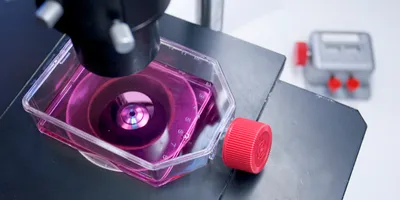Introduction: Why Cell Culture Automation Matters for Today’s Labs
Cell culture is foundational to countless applications across pharmaceuticals, biotechnology, and academic research. Yet, the traditional methods—manual pipetting, subjective monitoring, and repetitive handling—are ripe for disruption. Today’s laboratories face growing demands for higher throughput, reproducibility, and tighter quality control. Enter cell culture automation—a transformative approach that’s enabling labs to scale operations, reduce human error, and explore cutting-edge methodologies like 3D automated cell culture.
Whether you're overseeing a high-throughput screening facility or managing a cell therapy pipeline, understanding and integrating automated cell culture systems can be a game-changer.
Enhancing Precision with Cell Culture Automation
Manual cell culture is inherently variable, leading to inconsistencies that can compromise experimental outcomes. Automated cell culture systems offer unmatched precision and repeatability, essential for QA/QC environments and clinical-grade cell production.
Key Benefits:
- Consistent environmental control (temperature, CO₂ levels, humidity): Ensures optimal conditions for cell growth and viability, minimizing fluctuations that could compromise culture quality.
- Automated media exchange and cell seeding: Enhances timing and accuracy of critical processes, promoting uniform cell distribution and reducing variability.
- Reduced contamination risk through closed-system designs: Minimizes human intervention and exposure to external elements, crucial for sensitive or high-value cultures.
- Standardized protocols for scalability and regulatory compliance: Facilitates reproducibility across batches, supports GMP compliance, and simplifies documentation for audits and quality assurance.
- Real-time monitoring and data logging: Provides ongoing insights into culture conditions, enabling immediate corrective actions and improving overall process control.
Automated platforms not only minimize human error but also support continuous improvement and optimization. This enables laboratories to generate more reproducible and reliable data—a critical metric in both research and bioproduction, where outcomes hinge on consistency and regulatory integrity.
Advancing to 3D Automated Cell Culture Models
While 2D monolayer cultures are still widely used, they fall short in mimicking the structural and functional complexity of living tissues. 3D automated cell culture systems replicate the in vivo microenvironment more accurately, allowing researchers to generate physiologically relevant data.
Common 3D Models Enabled by Automation:
- Organoids for disease modeling and drug testing
- Spheroids for oncology and regenerative medicine
- Bioprinted scaffolds for tissue engineering
As demand for 3D models increases, automated systems are evolving to handle these formats seamlessly, ensuring throughput doesn’t suffer as complexity rises.
Cutting-Edge Automated Cell Culture Systems
Several cutting-edge platforms are setting the benchmark for automated and 3D cell culture. Here are two of the most impactful solutions:
1. Kawasaki’s Automated Cell Culture System (ACCS)
Kawasaki’s ACCS is a modular, fully enclosed platform designed for robust GMP-compliant workflows. It enables:
- Automated thawing, seeding, culturing, and harvesting
- Integration with robotic arms and automated imaging
- Customizable protocols for various cell types
2. Cytena C.Station Automated Cell Culture System
Cytena’s C.Station is designed to automate the expansion and maintenance of adherent cell cultures with precision and scalability. Key features include:
- Fully automated cell passaging and media exchange
- Compatible with standard labware such as T-flasks and multiwell plates
- Integrated live-cell imaging for real-time monitoring
- User-friendly software for protocol customization and reproducibility
The C.Station offers walk-away automation for routine tasks, reducing hands-on time and ensuring consistency in high-throughput environments. It is especially suitable for stem cell research, drug screening, and bioproduction workflows.
Scalable Automated Cell Culture for High-Throughput Labs
As laboratories expand operations or pivot to high-throughput screening and cell-based assays, scalability becomes critical. Automated cell culture solutions are designed to meet increasing demands while maintaining high levels of precision and efficiency.
Automation Enables:
- 24/7 operation without increasing labor costs: Systems can operate continuously, reducing turnaround time and maximizing resource use.
- Parallel processing of multiple cell lines: Allows simultaneous cultivation and maintenance of different cell types, supporting complex experimental pipelines.
- Rapid adaptation to evolving assay formats or new targets: Automation systems can be reprogrammed or reconfigured quickly to handle changing research needs.
- Integration with upstream and downstream processes: Enables seamless connection to liquid handling, imaging, and analytical platforms, creating end-to-end solutions.
- Scalable production capacity: Systems can be expanded with additional modules or units as project scope or production volumes increase.
This scalability is essential in fields like drug discovery, biologics manufacturing, and personalized medicine, where screening thousands of compounds or producing patient-specific therapies demands consistent, reproducible, and high-volume output. Moreover, automated systems facilitate technology transfer and standardization across multi-site operations, enhancing collaborative research and global scalability.
Cost-Efficiency and Workflow Optimization in Cell Culture Automation
Investing in automation requires upfront capital, but the long-term ROI is substantial. Labs must evaluate the trade-offs between manual labor, consumables, and system maintenance versus the gains in productivity and compliance.
Decision-Making Checklist:
- Is your lab struggling with manual bottlenecks?
- Are your workflows frequently compromised by variability?
- Do you need to meet GMP or regulatory standards?
- Will your operation benefit from 3D model adoption?
When the answer is “yes” to several of these, automation isn’t just a luxury—it’s a necessity.
Conclusion: Elevating Lab Innovation with Cell Culture Automation
As the demand for complex, high-throughput, and reproducible data continues to rise, cell culture automation and particularly 3D automated cell culture will become central pillars of modern laboratory operations. These tools not only streamline workflows but also unlock new research capabilities and accelerate the journey from bench to bedside.
For labs striving for efficiency, consistency, and innovation, the message is clear: automation is no longer optional—it’s the new standard.
Frequently Asked Questions (FAQs)
What is cell culture automation and why is it important?
Cell culture automation involves using machines and software to perform tasks such as seeding, passaging, and monitoring cells. It's important because it improves consistency, reduces contamination risks, and allows labs to scale their operations efficiently.
How does 3D automated cell culture differ from traditional methods?
Unlike traditional 2D cell culture, 3D automated cell culture mimics the natural environment of cells, offering more physiologically relevant results. Automation ensures these complex structures are produced with consistent quality and scalability.
What are the best systems for automated cell culture in 2025?
Leading platforms like Kawasaki’s ACCS and Cytena’s C.Station offer robust solutions for different needs—from GMP-compliant workflows to high-throughput adherent cell expansion. These systems support both 2D and 3D culture formats with integrated automation and monitoring capabilities.
Introduction: Why Cell Culture Automation Matters for Today’s Labs
Cell culture is foundational to countless applications across pharmaceuticals, biotechnology, and academic research. Yet, the traditional methods—manual pipetting, subjective monitoring, and repetitive handling—are ripe for disruption. Today’s laboratories face growing demands for higher throughput, reproducibility, and tighter quality control. Enter cell culture automation—a transformative approach that’s enabling labs to scale operations, reduce human error, and explore cutting-edge methodologies like 3D automated cell culture.
Whether you're overseeing a high-throughput screening facility or managing a cell therapy pipeline, understanding and integrating automated cell culture systems can be a game-changer.
Enhancing Precision with Cell Culture Automation
Manual cell culture is inherently variable, leading to inconsistencies that can compromise experimental outcomes. Automated cell culture systems offer unmatched precision and repeatability, essential for QA/QC environments and clinical-grade cell production.
Key Benefits:
To continue reading this article, sign up for FREE to

Membership is FREE and provides you with instant access to eNewsletters, digital publications, article archives, and more.












